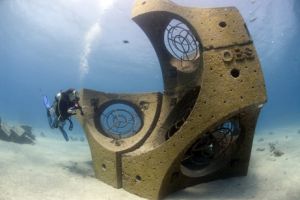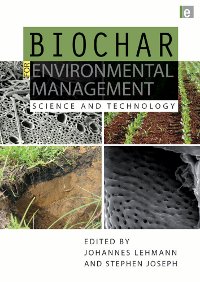The International Biochar Initiative has gone from strength to strength in the past year, and TEPUI
are delighted to see (and occasionally contribute to) that progress. They have just released their
2009 Review, and I have included it in this post.
If you can see the potential for this highly scalable technology for rebuilding soil productivity
while sequestering significant amounts of carbon, then consider helping out IBI with a membership.
Links for all that and more are in the review text which follows:
"IBI
has achieved some major milestones in 2009 that we are proud to share.
Organizationally, we grew from two part-time staff members in 2008 to
six at the end of 2009. We began the process of expanding our board,
bringing on new board member David Wayne in October. We drafted IBI's
first strategic plan and launched a membership program. We convened a
new advisory committee of 39 members from 13 countries to consult on all aspects of
IBI's work. Thanks to the hard work of administrative director Lee Parker,
we set up all the systems for planning, accounting and reporting that a
non-profit organization needs in support of the IBI programs that we
are developing to serve the biochar community. Here are some highlights
of our program work in 2009:
"Research Support
Objective:
To support the development of a knowledge base on biochar
characteristics in relationship to soil health, crop productivity,
by-product management, bioenergy production and carbon sequestration.
"Biochar Standards
- Starting at the May 2009 Asia Pacific Biochar Conference in Australia
and continuing to the North American Biochar Initiative conference in
the USA, IBI initiated a biochar characterization workgroup
that will develop a definition of biochar and a classification scheme
across feedstocks, production systems and applications. This work will
become a major IBI focus in 2010.
"Biochar Community Resources - We added website resources including a searchable
research bibliography, an academic and research program directory, a list of biochar reports and a series of research summaries explaining important aspects of biochar research to the
general public.
"Research - IBI Extension Director Julie Major
drafted a research gaps matrix to indentify areas that need more
attention and funding. Julie and board member Johannes Lehmann reviewed
biochar research projects and papers and made numerous presentations at
scientific meetings and conferences.
"Policy
Objective:
To promote the adoption of supporting policy mechanisms within the
global community regarding the inclusion of biochar in all appropriate
policy contexts.
"UNFCCC process - After a successful launch for biochar at COP 14 in Poznan in 2008,
IBI Executive Director Debbie Reed pressed forward with the process, attending informal UNFCCC
meetings and negotiations in Bonn, Germany in April and June. IBI also
hosted a side event at the UNCCD (UN Convention to Combat
Desertification) COP9 in Buenos Aires in September. As a result of our
joint work with UNCCD, 16 countries and the UNCCD Secretariat itself
have made submissions to the UNFCCC to include biochar in the
negotiating text for the next climate agreement. At COP15 in Copenhagen,
the IBI delegation hosted one side event and participated in several
others concerning biochar, marking a new high point of interest in
biochar as a climate solution. IBI also continued to educate delegates,
high-ranking government officials, non-governmental environmental
groups and other conference observers of the benefits of biochar at the
COP15, and held several meetings with the biochar community, bringing
together interested parties from multiple backgrounds. IBI has also
secured UNFCCC credentials as a observer group to the Convention,
assuring us a seat at the table as climate negotiations continue.
"National and Regional - Debbie Reed prepared written biochar briefs for the
Australian government, the UK Parliament
and the European Union Energy Directorate. She also reviewed proposed
carbon standard methodologies and white papers on biochar offsets,
including one for the state of California and one for the Voluntary
Carbon Standard. Debbie has also provided policy support and strategic
advice to multiple members of the international biochar community at
the national and sub-national level.
"US policy
- Debbie Reed met with staff at the White House, State Department, EPA,
USDA and the Department of Interior regarding the role of biochar as a
climate mitigation, waste management, and soil enhancement technology.
She has also conducted briefing and educational sessions for many
congressional offices and committees in the US House and the Senate. In
June, Johannes Lehmann testified at a congressional hearing on climate change impacts. As a result of
this work, biochar is now a part of two important pieces of pending legislation, and will be included in a third.
"Project Support
Objective: Expand and facilitate biochar production and utilization demonstration projects
globally.
"Developing country projects - IBI is supporting projects
through assistance in the areas of agronomy and pyrolysis in several
countries. We have been able to help projects secure funding in a few
cases. Julie Major visited projects in Costa Rica, Honduras, and Chile,
while board member Stephen Joseph provided hands on help with a new
kiln design used in a Costa Rica project.
"Extension services - In July, IBI hired Jane Lynch
as technical extension director. Jane has been working in Australia
with Stephen Joseph to develop testing procedures for biochar kilns and
stoves. Through the Ask the Extension Director form
on the IBI website, as well as via telephone calls and emails, Jane and
Julie have answered dozens of questions each month from farmers,
gardeners, project developers and regional biochar groups.
"Training materials - IBI published a Guide to Conducting Biochar Trials
written by Julie Major. Julie and Jane are developing additional
training materials and guides that we will offer as online workshops in
2010.
"Commercialization - IBI developed a biochar value streams matrix
to help guide thinking about commercialization potential of biochar.
Many ideas are now on the table and new programs to assist companies
will continue to blossom in 2010.
"Communications
Objective: To be an objective and reliable source of information on biochar policy, production and
utilization.
"Presentations
- IBI staff and board members maintained a busy schedule of
presentations at meetings and conferences addressing scientific
societies, agricultural organizations, and newly formed biochar
regional groups.
"Conferences and regional groups - IBI co-sponsored regional biochar conferences
around the world including the Asia Pacific Biochar Conference in Australia, the North American Biochar Conference in the USA, and smaller regional conferences.
We supported the formation of 24 regional biochar groups in 15 countries and regions and provided a page for each
group on our website. IBI Communications Director, Thayer Tomlinson, started work on the next IBI international conference to be
held in Brazil in 2010.
"Networking - Thayer and IBI Communications Editor, Kelpie Wilson, transformed the IBI website into an information-dense platform with daily news updates and networking features like a member directory, a bulletin board and a blog. Our monthly newsletter
kept the community informed about new projects and developments in
research and policy, and we answered several hundred individual
requests for more information via phone and email.
"Publications - We contributed to the preparation and support of the book Biochar for Environmental Management, released in February 2009. We prepared
many fact sheets, white papers and answers to Frequently Asked Questions. We reported on biochar projects and activities around the world.
"Membership - IBI has launched a membership program
to widen our support base. IBI is grateful for the start-up funding it
has received from foundations and generous individuals. Now the IBI
needs to broaden its sources of funding onto a sustainable basis. Our
membership program will not only provide core funding, but it will
establish a reciprocal relationship between IBI and practitioners and
interested parties around the world.
"Please Join IBI today! Those who signal their continuing interest
through membership will be welcomed into a reliable community whose
opinions will continue to help steer and develop the work of the IBI.
We hope you will want to contribute to the realization of biochar's
potential as one of the "wedges" that offer a solution to the climate
crisis.
To all those who have already joined as IBI Members - a Big Thank You!
"Show your Support--Become an IBI Charter Member
From
now until 31 January 2010, IBI invites biochar supporters to become
Charter Members of IBI. Charter Members will receive a special gift -
the IBI hat - free with your membership dues.
"As you can see, IBI has worked very hard over the past year to advance
biochar. Through this work of IBI and others, more people are
recognizing that sustainable biochar is a powerfully simple tool to
fight global warming. But we need your help to hit the ground running
in 2010 to continually expand the services we can offer to the biochar
community. Help us raise the resources we need to support greater
development of sustainable biochar - become an IBI member!
"Sustainable biochar is one of the few technologies that is relatively
inexpensive, widely applicable and quickly scalable. We really can't
afford not to pursue it.
Click here to join.
"Call for Abstracts for USBI 2010 Conference
"Recent
advances in biochar science and technology will be showcased at Biochar
2010: U.S. Biochar Initiative Conference, hosted by Iowa State
University on June 27-30. Join scientists, engineers, policymakers,
policy analysts, producers, and users to discuss these critical
developments.
Call for Abstracts now open • Deadline for submission: February 1
For Biochar2010 conference information, visit www.biorenew.iastate.edu/biochar2010
"First Biochar Workshop Held in Malaysia
The
first Biochar Malaysia Workshop was held December 14, 2009 in Kuala
Lumpur and was organized by Dr Amran Salleh. Among the speakers were
the Vice Chancellor of the University Putra Malaysia, Dr Nik Mustapha
R. Abdullah; the Deputy Minister of Science and Technology speaking for
the Minister, Dr. Maximus Johnity Ongkili, and IBI Chair Dr. Johannes
Lehmann, Cornell University.
"The event
provided ample opportunity for lively discussion on the science and
technology priorities for biochar in Malaysia and the opportunities and
needs for organizing a Malaysian biochar initiative. To read more about
the workshop, see: https://www.icc.upm.edu.my/biochar/index.php?content=home "


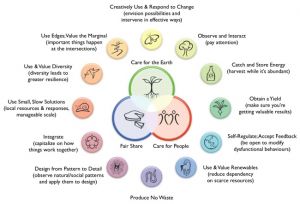
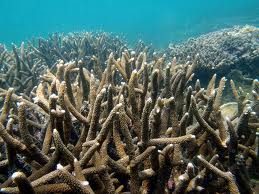
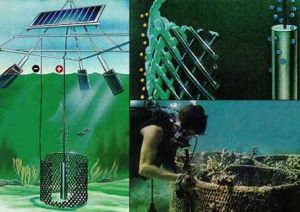 Like the work of
Like the work of 